How to Grow Mesembryanthemum
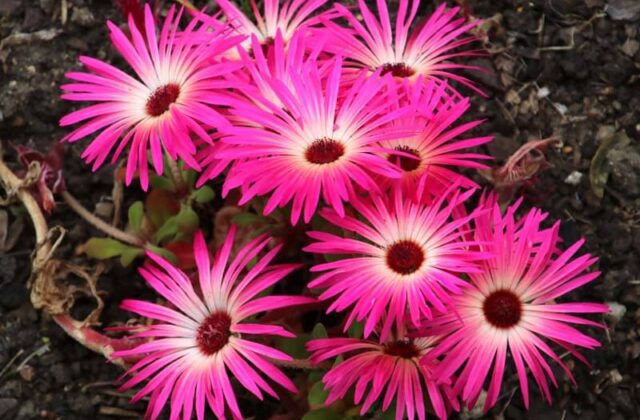
Introduction
Mesembryanthemum, also known as ice plants or Livingstone daisies, offers a striking array of colors and textures to gardens worldwide. They originate from the arid landscapes of southern Africa. They have found their way into the hearts of gardeners for their stunning daisy-like flowers and adaptability to harsh conditions. Mesembryanthemums thrive in hot, arid climates. They are well-known for their ability to withstand drought and poor soil, making them popular for xeriscaping and coastal gardens. To grow Mesembryanthemum in your garden is a rewarding endeavor, particularly when following some simple guidelines.
Ensure that you plant them in well-draining soil and provide them with adequate sunlight exposure. These plants detest soggy conditions, so be cautious not to overwater. Incorporating organic matter into the soil can help improve drainage and fertility. Secondly, regular deadheading of spent flowers encourages continuous blooming and promotes a neat appearance. With a little attention and care, you can successfully grow Mesembryanthemum. Adorning your garden with a vibrant tapestry of color and texture throughout the growing season.
Popular Mesembryanthemum Varieties and its Characteristics
While there are numerous Mesembryanthemum species and cultivars, listing a few specific varieties might be challenging. However, here’s an attempt to provide a diverse and popular selection:
- Mesembryanthemum guerichianum, commonly known as the ice plant, is a succulent species native to arid regions. It is characterized by its fleshy, water-storing leaves and vibrant, daisy-like flowers.
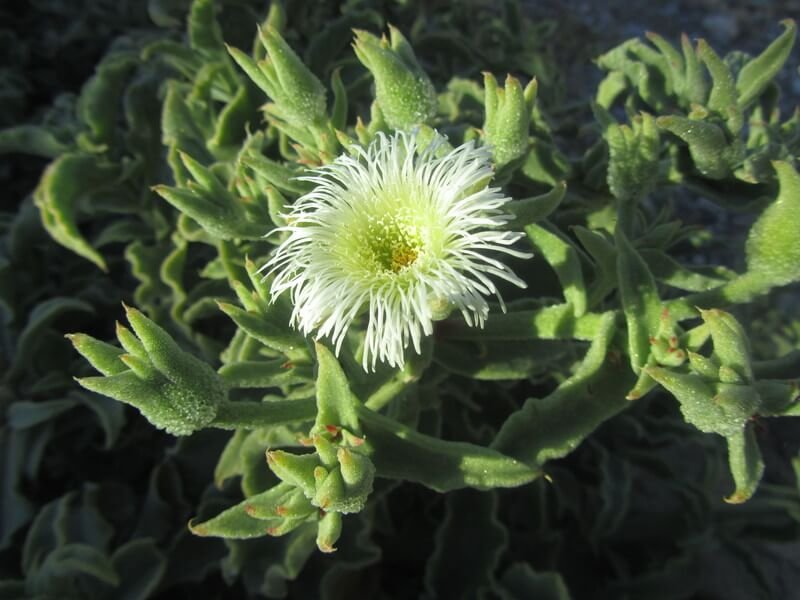
- Mesembryanthemum cryptanthum is a succulent plant with small, fleshy leaves and inconspicuous flowers, typically found in arid and semi-arid environments.
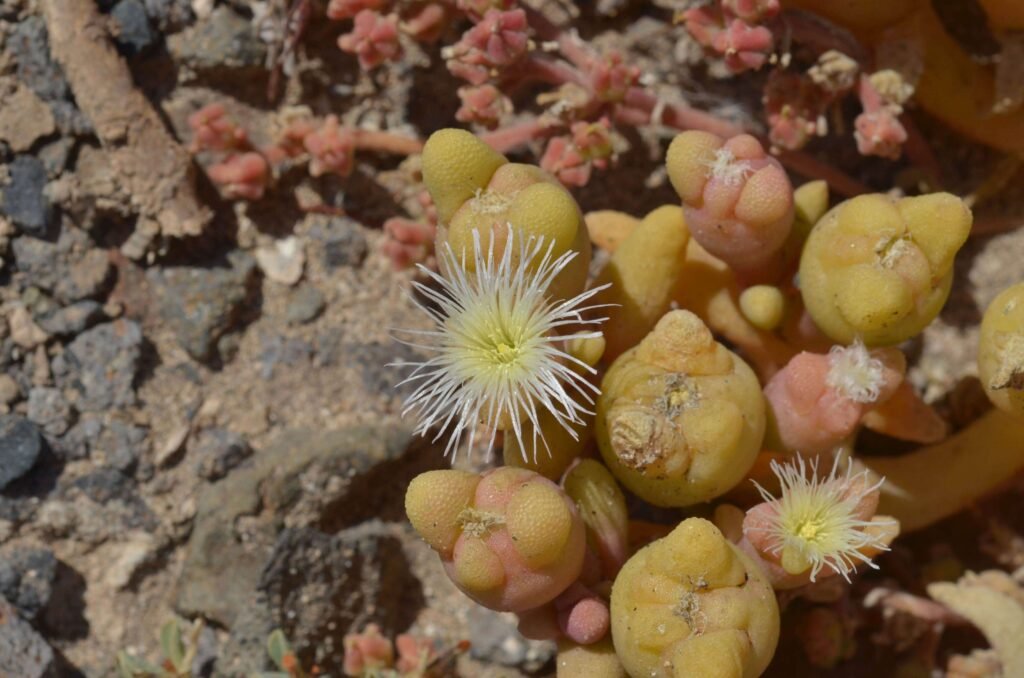
- Mesembryanthemum nodiflorum, also known as slender-leaved ice plant or knotweed fig-marigold, is a succulent annual plant. It has fleshy leaves and small white to yellow flowers. It thrives in saline and sandy soils.
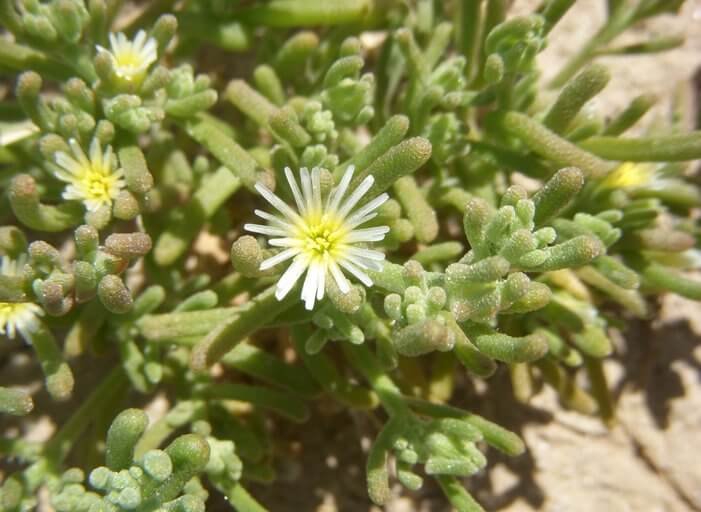
- Mesembryanthemum tortuosum, commonly known as kanna or channa, is a succulent plant native to South Africa, traditionally used for its mood-enhancing and stress-relieving properties.
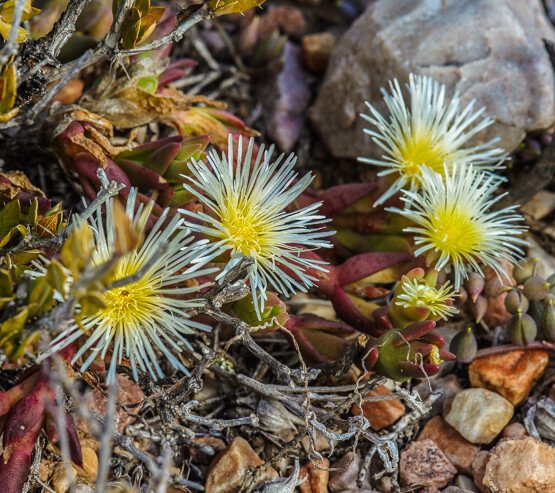
- Mesembryanthemum nitidum, also known as the glistening ice plant, is a succulent with shiny, fleshy leaves and bright, daisy-like flowers, typically found in coastal regions.
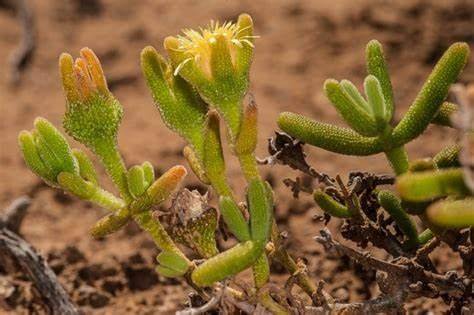
- Mesembryanthemum resurgens is a succulent plant known for its thick, fleshy leaves and resilience in arid environments, often with vibrant, daisy-like flowers.
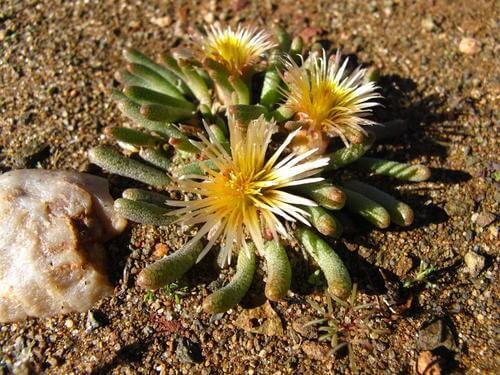
- Mesembryanthemum barklyi is a succulent plant with fleshy leaves and star-shaped flowers, commonly found in dry, sandy regions.
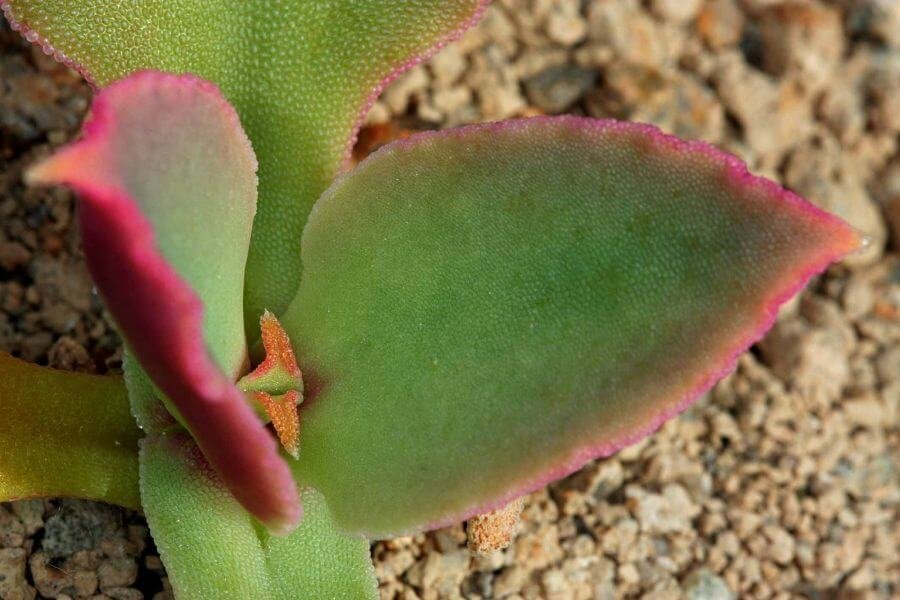
- Mesembryanthemum tetragonum is a succulent plant with angular stems and daisy-like flowers, commonly found in arid and coastal areas.
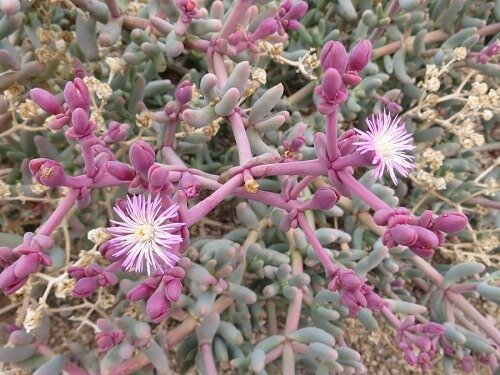
- Mesembryanthemum aitonis, commonly known as Aiton’s fig-marigold, is a succulent plant species notable for its fleshy, triangular leaves and bright, daisy-like flowers, typically found in arid and coastal habitats.
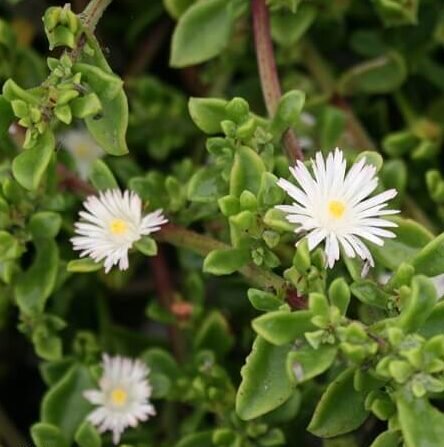
- Mesembryanthemum splendens is a succulent plant with vibrant flowers and water-retentive leaves, often grown for ornamental purposes in dry, sunny environments.
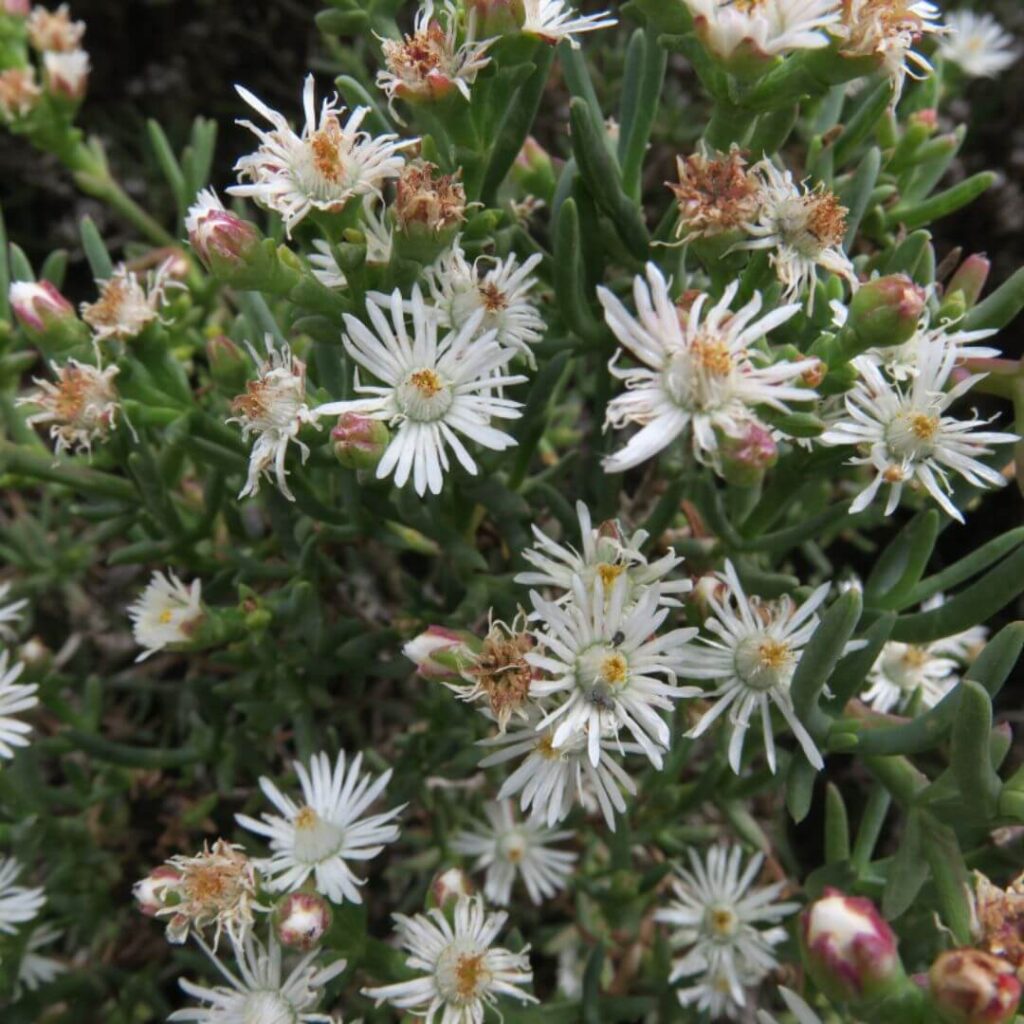
- Mesembryanthemum grossum, also known as giant ice plant or large fig-marigold, is a succulent species with fleshy leaves and daisy-like flowers, often grown for ornamental purposes in gardens and landscapes.
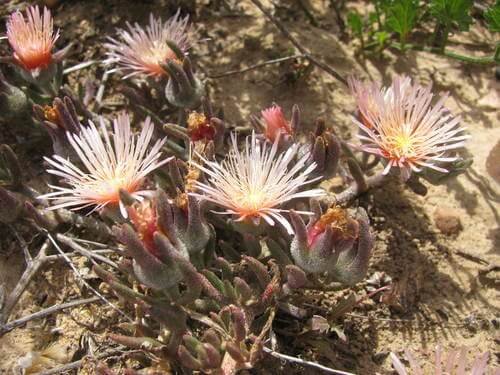
- Mesembryanthemum pallens, also known as pale fig-marigold or pale ice plant, is a succulent species with delicate, pale green leaves and small, white to pinkish flowers, typically found in coastal regions and sandy habitats.
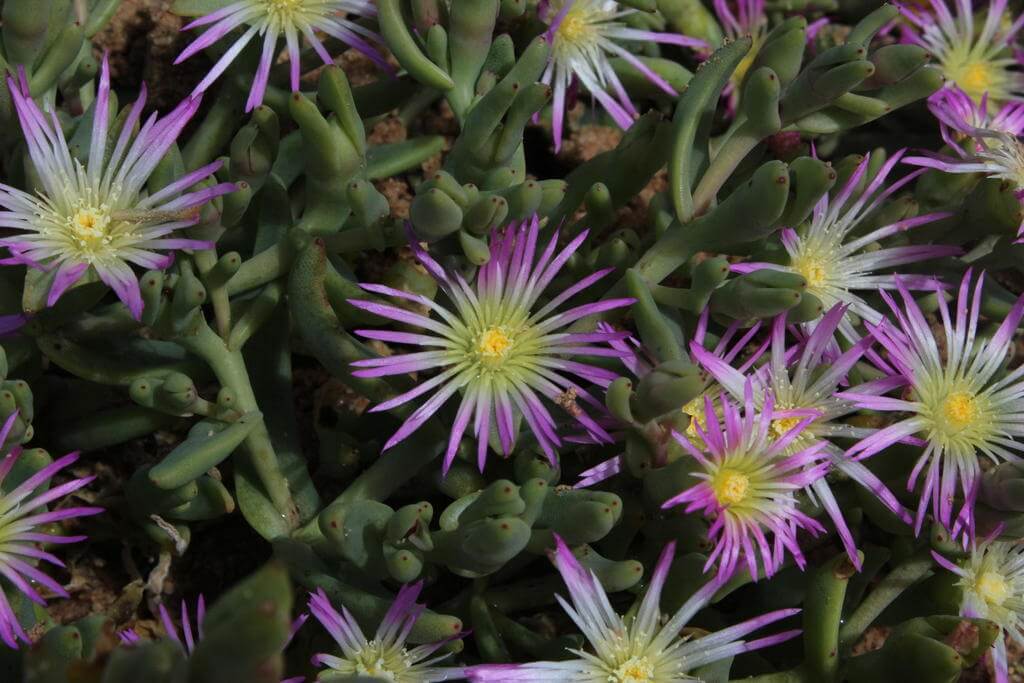
- Mesembryanthemum granulicaule, also known as granite mesembryanthemum, is a succulent plant with a granular texture on its stems and leaves. It’s typically found in rocky or gravelly habitats and has pink to purple flowers.
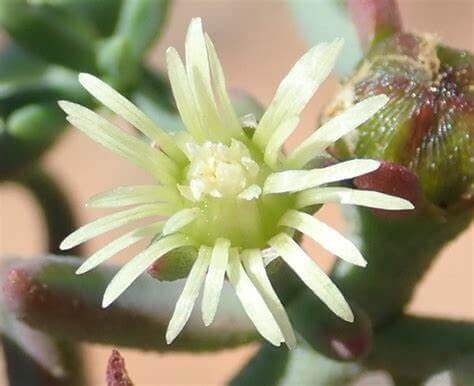
- Mesembryanthemum digitatum, also known as finger mesembryanthemum, is a succulent plant with finger-like leaves and vibrant daisy-like flowers. It helps stabilize dunes and is found in sandy coastal habitats.
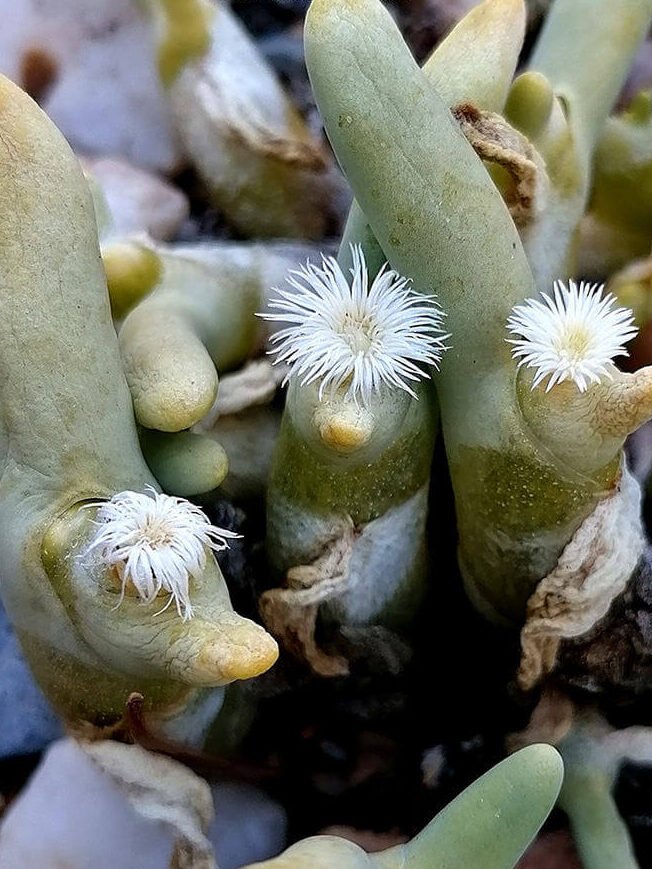
- Mesembryanthemum junceum, also known as rush-leaved ice plant, is a succulent species with slender, rush-like leaves and bright, daisy-like flowers, often found in coastal regions and sandy habitats where it helps stabilize soil.
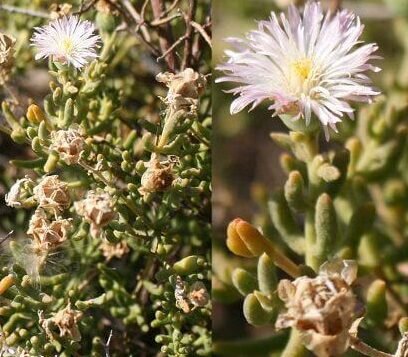
- Mesembryanthemum paulum, also known as Paul’s fig-marigold, is a succulent plant with compact growth and daisy-like flowers, typically found in rocky or sandy habitats, adding charm to arid landscapes.
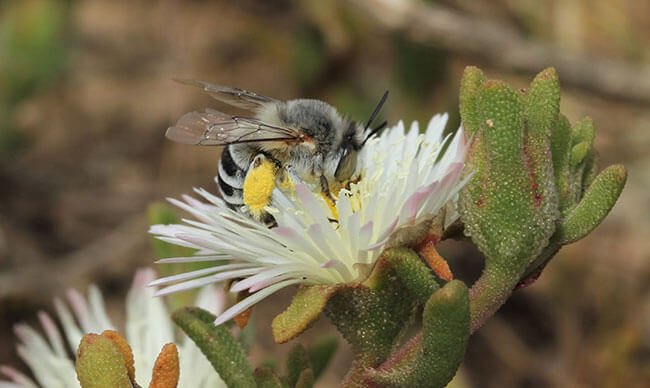
- Mesembryanthemum cordifolium, also known as heart-leaved ice plant, is a succulent with heart-shaped leaves and daisy-like flowers, often used as ground cover in dry gardens or rockeries.
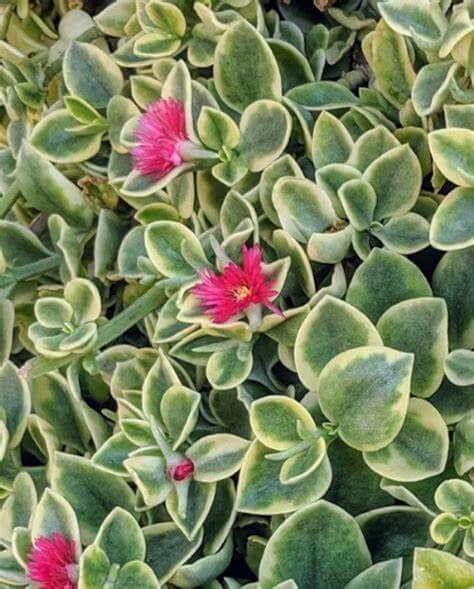
- Mesembryanthemum rapaceum, commonly known as rapacious fig-marigold, is a succulent plant species notable for its robust growth habit and large, showy flowers, typically found in sandy or rocky habitats, where it adds vibrant color to arid landscapes.
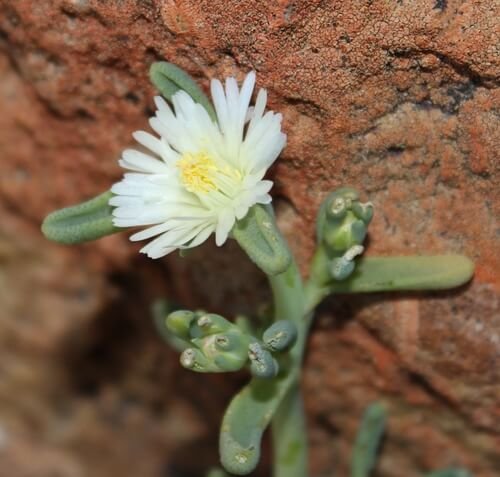
- Mesembryanthemum coriarium is a succulent plant with tough, leathery leaves and vibrant, daisy-like flowers. It’s commonly found in coastal regions and rocky habitats, contributing to arid landscape biodiversity.
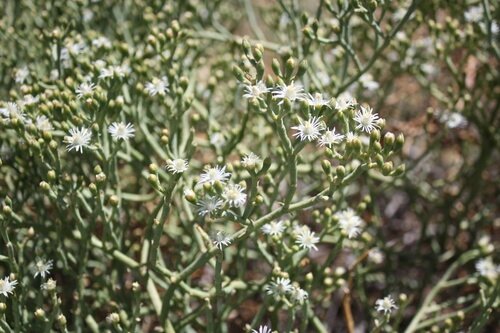
- Mesembryanthemum longistylum is a succulent plant species with elongated flower tubes and daisy-like flowers, typically found in arid regions.
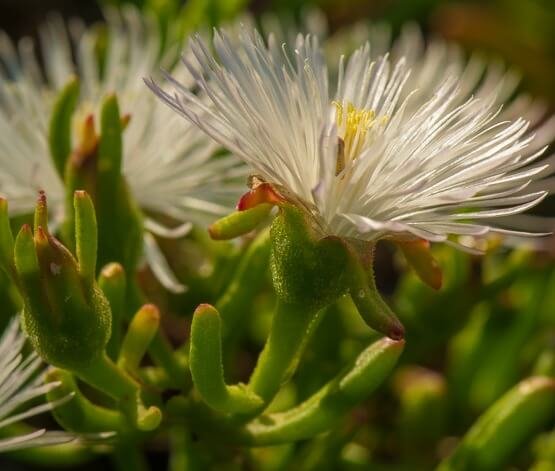
- Mesembryanthemum haeckelianum, also known as Haeckel’s fig-marigold, is a succulent with fleshy leaves and daisy-like flowers, found in arid habitats, adding beauty to dry landscapes.
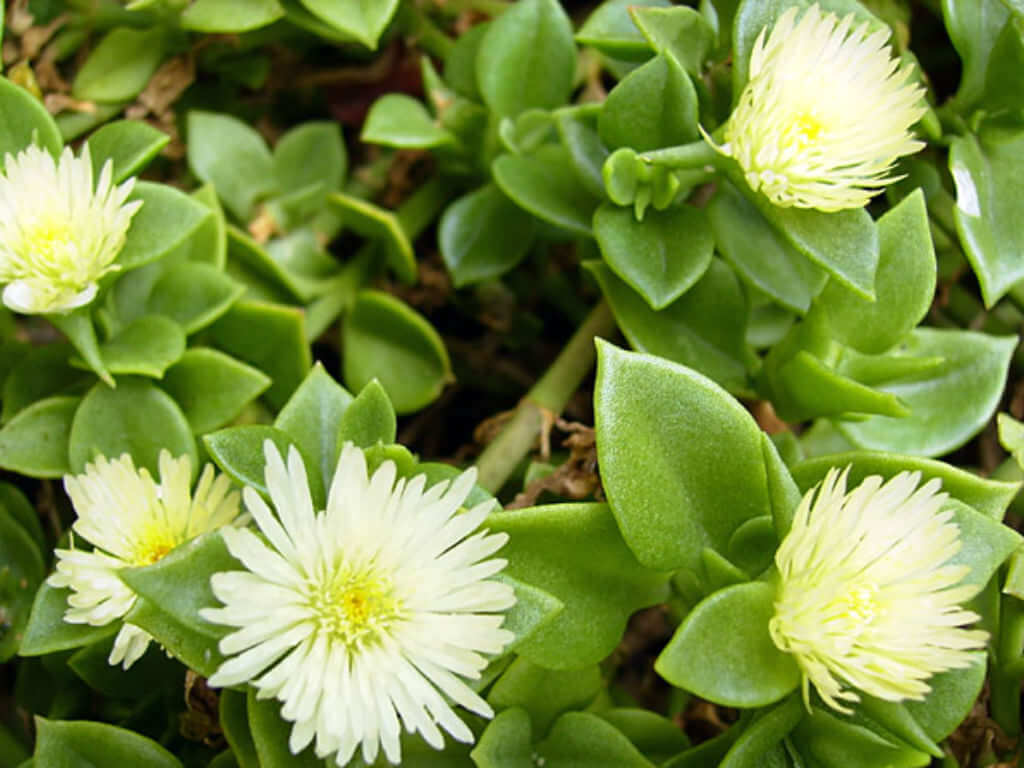
- Mesembryanthemum crystallinum, also known as common ice plant or crystalline ice plant, is a succulent plant with glistening bladder cells on its leaves, giving it a crystalline appearance. It is edible and has been historically used for food and medicinal purposes.
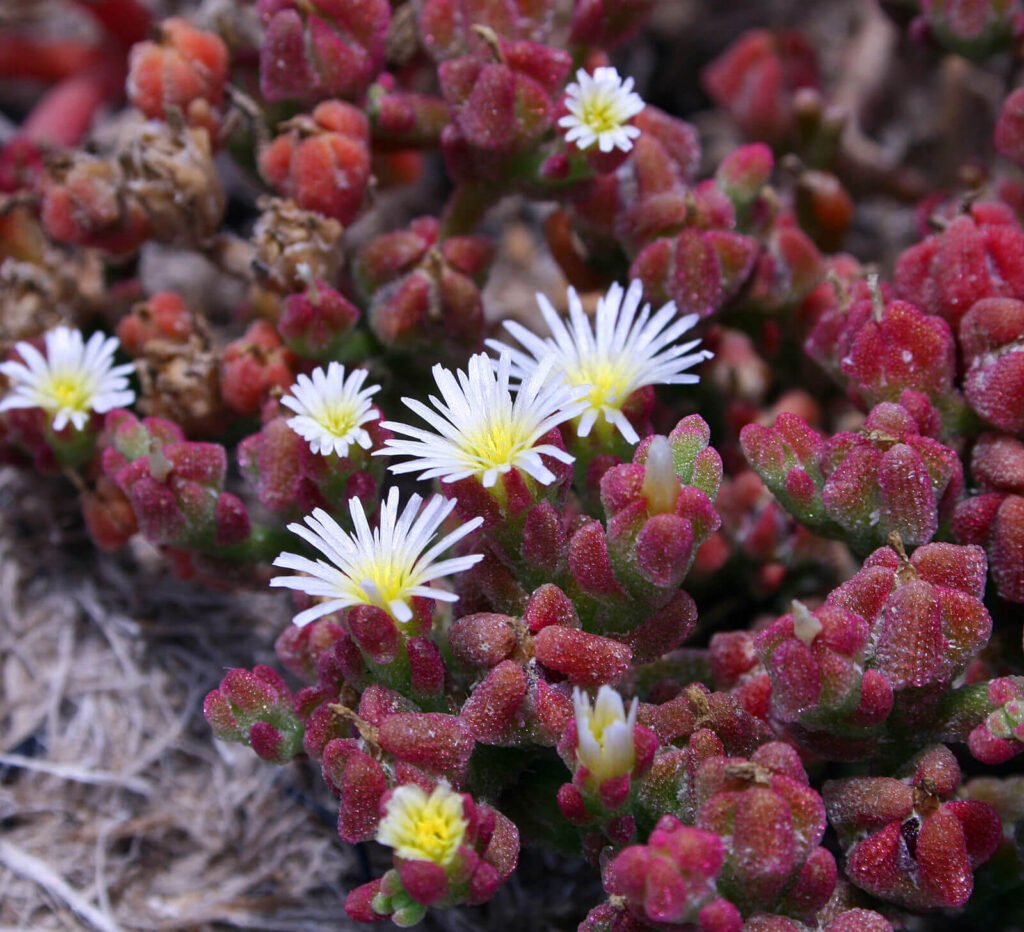
- Mesembryanthemum noctiflorum, also known as the evening-blooming mesembryanthemum, is a succulent plant species recognized for its habit of blooming at night. It displays small, delicate flowers that open in the evening and close during the day, typically found in arid and sandy habitats.
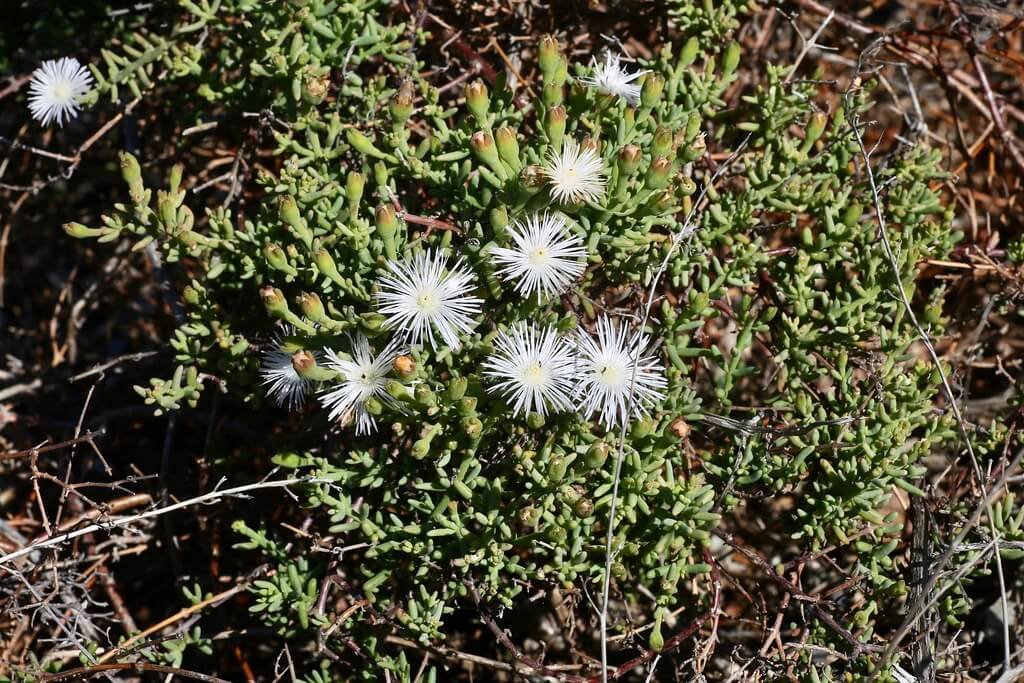
- Mesembryanthemum canaliculatum is a succulent with channeled leaves and daisy-like flowers, commonly found in arid and coastal regions, adding to the diverse flora of these environments.
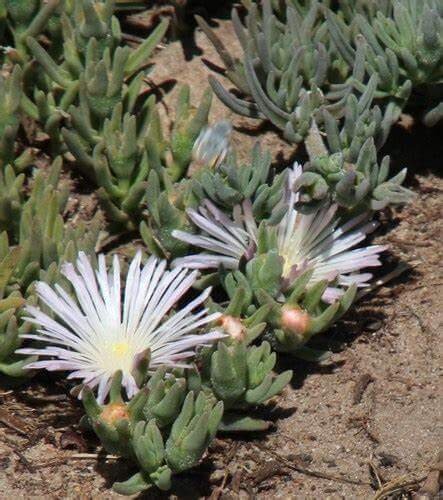
- Mesembryanthemum sladenianum is a succulent plant species known for its compact growth, fleshy leaves, and small, bright flowers. It thrives in arid and rocky habitats, enhancing biodiversity.
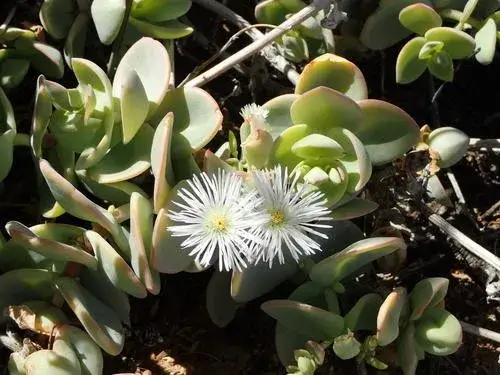
- Mesembryanthemum hypertrophicum is a succulent with thick leaves and daisy-like flowers, found in arid and semi-arid environments.
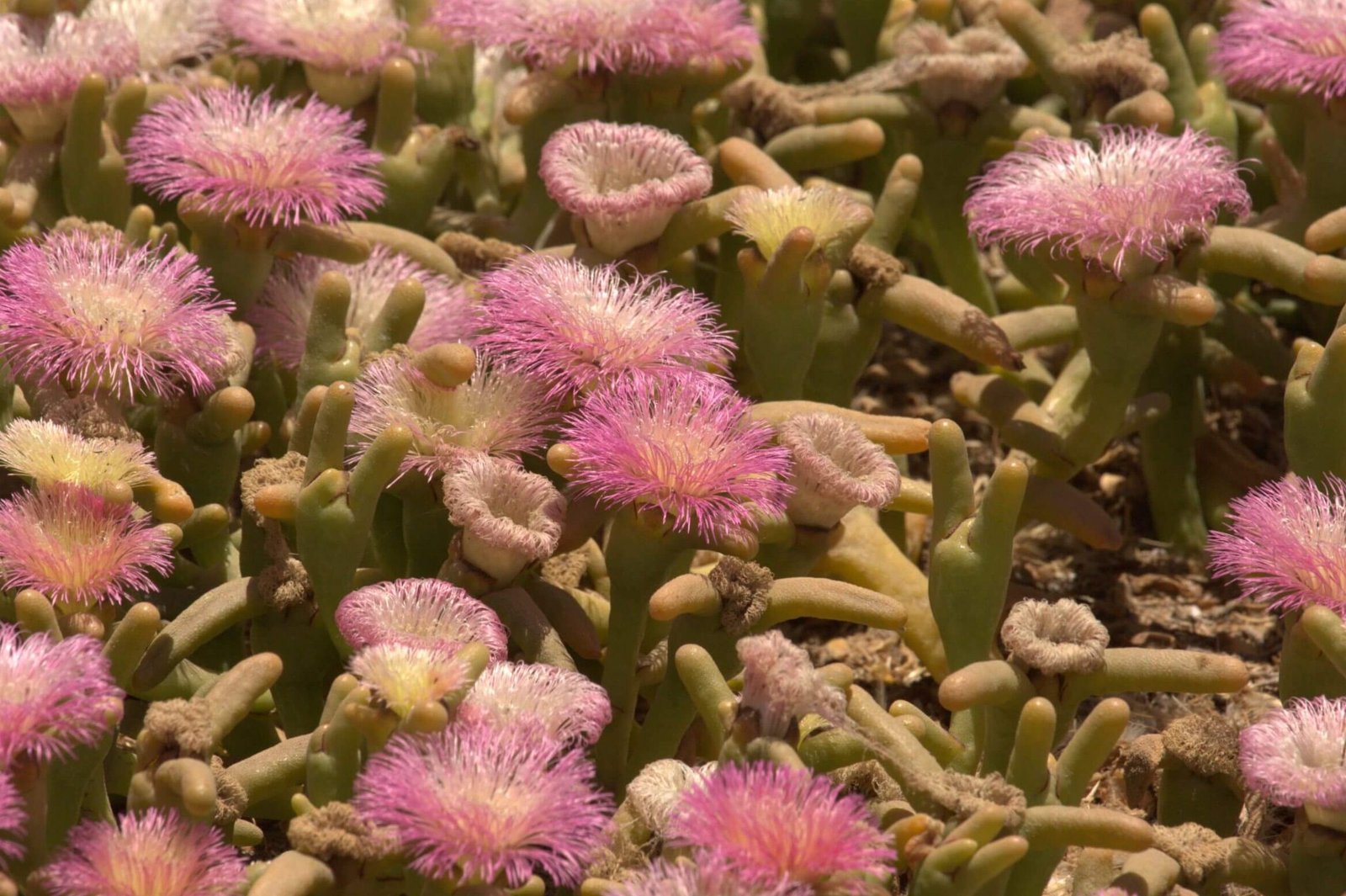
- Mesembryanthemum dinteri is a succulent plant known for its compact growth, fleshy leaves, and small, bright flowers. It thrives in arid and semi-arid regions, adding to the biodiversity of these harsh environments.
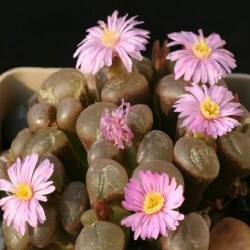
Choosing the Right Location
To grow Mesembryanthemum, you need sunny locations with well-draining soil, making them an excellent choice for brightening up any garden. To ensure vibrant blooms, it’s essential to select a spot with at least 6 hours of direct sunlight. Additionally, it’s important to avoid waterlogged areas as mesembryanthemums are susceptible to root rot. For better control over soil conditions, consider planting them in raised beds or containers.
Understanding Sunlight Needs
Mesembryanthemums, also known as Livingstone daisies, are sun-worshippers, requiring full sun to bloom profusely and display their stunning colors. While they can tolerate some light shade, it’s important to note that they may produce fewer flowers in such conditions. Adequate sunlight exposure is crucial for promoting healthy growth and vibrant, eye-catching colors in these beautiful plants. Without enough sunlight, mesembryanthemums may experience leggy growth and diminished flowering.
Optimal Soil Conditions
To grow mesembryanthemum successfully, it’s crucial to provide them with well-draining, sandy soil to avoid waterlogging and root diseases. Additionally, maintaining a slightly acidic to neutral pH level between 6.0 and 7.0 is ideal for these drought-tolerant plants. Incorporating organic matter into the soil not only enhances its fertility but also improves drainage capabilities. It’s important to avoid heavy clay soils that retain excess water, as this can be detrimental to the root systems.
Watering Techniques
To grow your Mesembryanthemum plants, it’s crucial to adopt a deep, infrequent watering schedule that promotes robust root development. A moisture meter can accurately gauge the moisture levels in the soil, indicating the perfect time to water your plants. Watering early in the morning facilitates the evaporation of excess moisture throughout the day. It is effective in decreasing the likelihood of fungal diseases. Furthermore, applying a layer of mulch around the plants aids in retaining soil moisture. It reduces the frequency of watering needed to maintain their health and vigor.
Balancing Moisture Levels
To grow healthy Mesembryanthemum plants, it’s crucial to monitor the soil, striking a balance between moisture and avoiding waterlogging. Adjusting the watering frequency based on environmental factors like temperature and humidity can help maintain optimal moisture levels. Consider using terracotta pots as they allow excess moisture to evaporate more easily, preventing overwatering. Additionally, regularly checking for drainage issues in containers or planting beds is essential to ensure a proper moisture balance. These simple steps will help you avoid common watering-related issues and keep your plants thriving.
Avoiding Overwatering
To grow Mesembryanthemum plants, it’s crucial to allow the soil surface to dry out slightly before watering again. These plants prefer drier conditions over constantly wet soil. This can be achieved by using well-draining potting mix and pots with drainage holes to prevent water from pooling at the roots. During rainy periods, it’s important to move potted Mesembryanthemum plants under shelter to avoid excessive water accumulation in the soil. Additionally, being mindful of overwatering signs such as yellowing leaves or wilting is essential.
Propagation Methods
Mesembryanthemum plants can be easily propagated from seeds, offering a straightforward way to expand your collection. Sowing the seeds directly into well-draining soil in a sunny location allows for the seamless initiation of new plants. In addition to seed propagation, dividing the rooted offsets of established Mesembryanthemum plants is another effective method for creating new growth. Taking cuttings from mature plants and rooting them in a moist, sandy growing medium also proves to be a successful propagation technique, providing gardeners with multiple options for expanding their Mesembryanthemum population.
From Seeds to Seedlings
To grow Mesembryanthemum from seeds, it’s best to sow them in early spring after the last frost date. Ensure they are lightly covered with soil. Keep the soil consistently moist until the seedlings emerge, then allow the top layer of soil to gradually dry out between watering sessions. Once the seedlings have developed their first true leaves. Transplant them into individual pots will allow them to continue their growth journey with ample space and resources. To help the seedlings acclimate to outdoor conditions, it’s important to harden them off by gradually exposing them to the elements before planting them in their final garden location. This process prepares them for a successful transition and ensures their continued vibrancy and health as they establish themselves in their new environment.
Division and Cuttings
When it comes to dividing Mesembryanthemum, it’s essential to select a mature plant and gently lift it from the soil to reveal its roots, allowing for careful separation. Separate the offsets with roots and replant them in well-prepared soil with ample sunlight and water for establishment. In the case of taking cuttings, it’s important to choose healthy stems and use a sharp, clean tool. It minimizes damage while removing them from the mother plant. To promote root development, dipping the cut ends in rooting hormone before placing them in a well-draining potting mix and maintaining consistent moisture levels will set the stage for successful propagation.
Pest and Disease Management
Regularly inspecting your Mesembryanthemum plants for signs of common pests such as aphids or spider mites is crucial to maintaining their health. Keep a close eye on any wilting, yellowing, or spotted leaves, as these can indicate potential diseases affecting your Mesembryanthemum. It’s also important to ensure good air circulation around your plants to prevent the development of fungal diseases. Consider implementing natural pest control methods by introducing beneficial predators like ladybugs or lacewings to manage pest populations in your garden, promoting a balanced and thriving ecosystem for your Mesembryanthemum plants.
Common Threats to Watch Out For
To grow and ensure the optimal health and vitality of your Mesembryanthemum plants, it’s crucial to be mindful of overwatering, as it can lead to root rot, especially in soil with poor drainage. Additionally, keep an eye out for powdery mildew, a common fungal disease that can affect Mesembryanthemums in humid conditions. Utilizing organic methods such as copper or eggshell barriers can help protect your plants from snails and slugs. Furthermore, to minimize the risk of pest infestations and diseases, avoid planting Mesembryanthemums in overcrowded areas to promote adequate airflow and overall plant health.
Natural Remedies and Prevention
Introducing beneficial insects like ladybugs and parasitic wasps into your garden can naturally control aphid populations, safeguarding your Mesembryanthemum plants. Additionally, spraying a mixture of neem oil and water on affected plants helps combat common pests such as whiteflies while preventing fungal infections. It’s also essential to prune any infected or damaged parts of the Mesembryanthemum plant to promote airflow and reduce the spread of diseases. Furthermore, applying a layer of organic mulch around the base of your Mesembryanthemum contributes to overall plant health by retaining moisture and suppressing weed growth. These practices form a comprehensive approach to pest and disease management while nurturing the vibrancy of your Mesembryanthemum plants.
Conclusion
In conclusion, to successfully grow Mesembryanthemum, it’s crucial to carefully consider the location, sunlight needs, soil conditions, and watering techniques. Properly balancing moisture levels and avoiding overwatering are essential for the plant’s health. The process of transitioning from seeds to seedlings and the propagation through division and cuttings requires attention to detail. Additionally, effective pest and disease management is vital for maintaining the plant’s vitality. By being mindful of common threats, implementing natural remedies, and prevention techniques, you can ensure the optimal health of your Mesembryanthemum plants, promoting a thriving and vibrant garden.
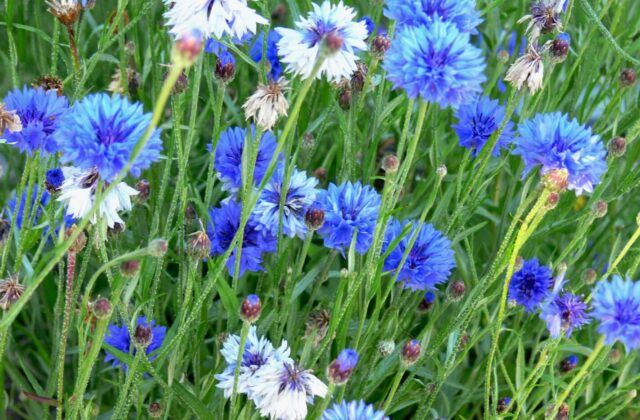
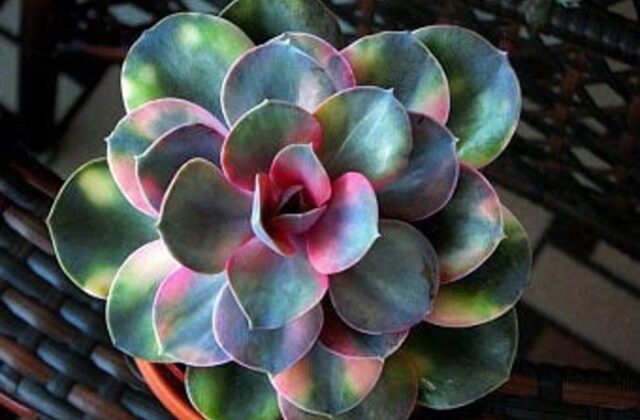
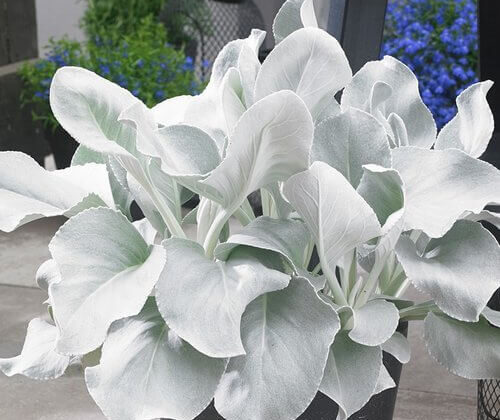
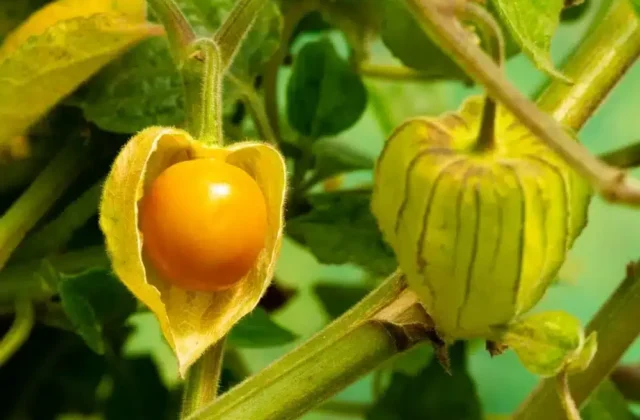
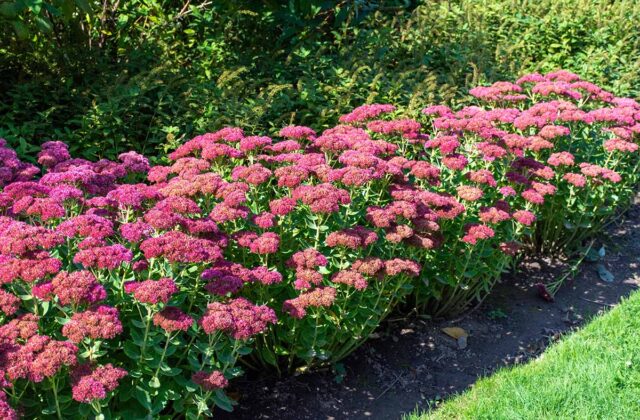
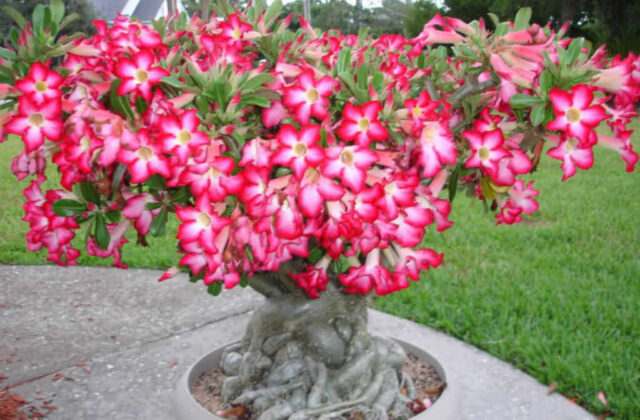
13 comments
Some genuinely interesting points you have written.Helped me a lot, just what I was searching for : D.
Hey people!!!!!
Good mood and good luck to everyone!!!!!
I like this weblog very much, Its a rattling nice billet to read and receive info.Blog monry
You made some nice points there. I did a search on the subject matter and found most individuals will approve with your website.
I like this website because so much useful material on here : D.
You actually make it appear really easy with your presentation but I find this matter to be really one thing that I feel I might by no means understand. It sort of feels too complex and very wide for me. I am having a look ahead on your next put up, I¦ll attempt to get the dangle of it!
You are my intake, I have few blogs and rarely run out from to post .
Do you have a spam issue on this website; I also am a blogger, and I was curious about your situation; many of us have created some nice practices and we are looking to swap methods with others, be sure to shoot me an email if interested.
I truly enjoy looking through on this site, it has got great content. “The living is a species of the dead and not a very attractive one.” by Friedrich Wilhelm Nietzsche.
You are a very intelligent person!
It’s hard to find knowledgeable people on this topic, but you sound like you know what you’re talking about! Thanks
Its great as your other articles : D, thankyou for putting up “History is a pact between the dead, the living, and the yet unborn” by Edmund Burke
Hi, I think your site might be having browser compatibility issues. When I look at your website in Safari, it looks fine but when opening in Internet Explorer, it has some overlapping. I just wanted to give you a quick heads up! Other then that, fantastic blog!